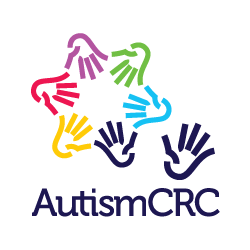UWA PLUS
Autism: diagnostic features and assessment approaches in older adolescents and adults (17+ years)
Students who undertake this micro-credential will gain the knowledge required to identify key diagnostic features of autism, and distinguish between neurotypical and neurodivergent development in older adolescents and adults (17+ years). They will also understand why an autism diagnosis may have been missed in childhood. The course also identifies and discusses a range of assessment methods and tools that can be used to obtain clinical information required for the autism diagnostic assessment, and considers the importance of this information for autism diagnostic evaluations of adolescents and adults.
Upon successful completion, you'll receive:
- Two PD Points - stackable for unspecified academic credit in award courses
- A Certificate of Achievement
- A UWA Plus Professional Development Transcript, listing all successfully completed micro-credentials
- Delivery mode
- Online - Self-paced learning
- Course dates
- Duration
- Self-paced flexible learning, but learners need to attempt the test and quiz and complete the course by the end of the teaching period in which they have enrolled
- Effort
- 50 hours
- Academic Lead
- Associate Professor Iliana Magiati
- Cost
- $660 inc. GST
- Critical information summary
- PSYCM514 Autism: diagnostic features and assessment approaches in older adolescents and adults (17+ years) [PDF 246KB]

What you'll learn
Identify and explain the reasons for which an autism diagnosis may have been missed in early childhood and the factors that contribute to the ‘later' identification of autism
Identify indicators of, and distinguish between, neurotypical and neurodivergent development and functioning in people aged 17+ years across different domains
Identify and describe key diagnostic features of autism in individuals aged 17+ years
Identify a range of assessment approaches that may be used in autism diagnostic assessments with individuals aged 17+ years
Outline the clinical information that may be gathered from the different assessment approaches and explain why this information is important in diagnostic assessments for autism in older adolescents and adults
Apply your knowledge of features and characteristics of autism and best practice autism diagnostic assessment in older adolescents and adults aged 17+ years to a case scenario

Why study this course?
This short course will provide students who are interested in autism assessment and diagnosis with an opportunity to gain a University micro-credential to recognise their learning. It also provides a unique opportunity for a range of professionals to enhance their knowledge of key diagnostic features of autism in adolescence and adulthood.
Recommended prior knowledge
It is recommended that students have English competence (ideally Year 12 English level), and have some direct experience working with children, adolescents and/or adults in a professional setting (e.g., school, mental health service, youth service).
Who should study this course?
This micro-credential will be of interest to anyone interested in autism diagnosis, including professionals and other stakeholders who come into contact with children and adults who may be autistic, and for whom formal assessment might be warranted.
This includes allied health professionals, such as practicing psychologists, speech pathologists, occupational therapists and social workers, medical professionals (e.g., GPs, paediatricians, psychiatrists) who regularly conduct autism assessments in the course of their practice, and other professionals who support children, adolescents and adults across different settings (e.g., mental health nurse practitioners, child health nurses, counsellors, other mental health practitioners, youth workers, educators, and others).
What's next after this course?
You may be interested in enrolling and completing one or more of our other autism diagnosis micro-credentials, also available through UWA Plus.
Learners who meet the admission requirements for the Graduate Certificate in Autism Diagnosis (GCAD) offered via The University of Western Australia may consider applying to the GCAD, which will equip students with the advanced knowledge and applied skills required to contribute to multidisciplinary diagnostic assessments for autism. Following the application and selection process, learners who are accepted and enrol in the GCAD will receive credit towards the first two units of the GCAD after successfully completing all seven of the autism diagnosis micro-credentials (PSYCM510, PSYCM511, PSYCM512, PSYCM513, PSYCM514, PSYCM515, and PSYCM516, which comprise GCAD units PSYC5520 and PSYC5521).
Please note that not all learners who enrol and complete the autism diagnosis micro-credentials are eligible to apply for the Graduate Certificate in Autism Diagnosis (GCAD). This is because the GCAD is developed to provide graduates trained in psychology, speech pathology, occupational therapy, paediatrics, or psychiatry with the specialist knowledge and applied skills required to participate in team-based diagnosis for autism. Therefore, acceptance into the GCAD is only available to learners who meet the course eligibility criteria following an application and selection process.
Industry endorsement
This micro-credential is part of a suite of seven credit bearing micro-credentials (CBMCs) developed by Autism CRC, with The University of Western Australia.


